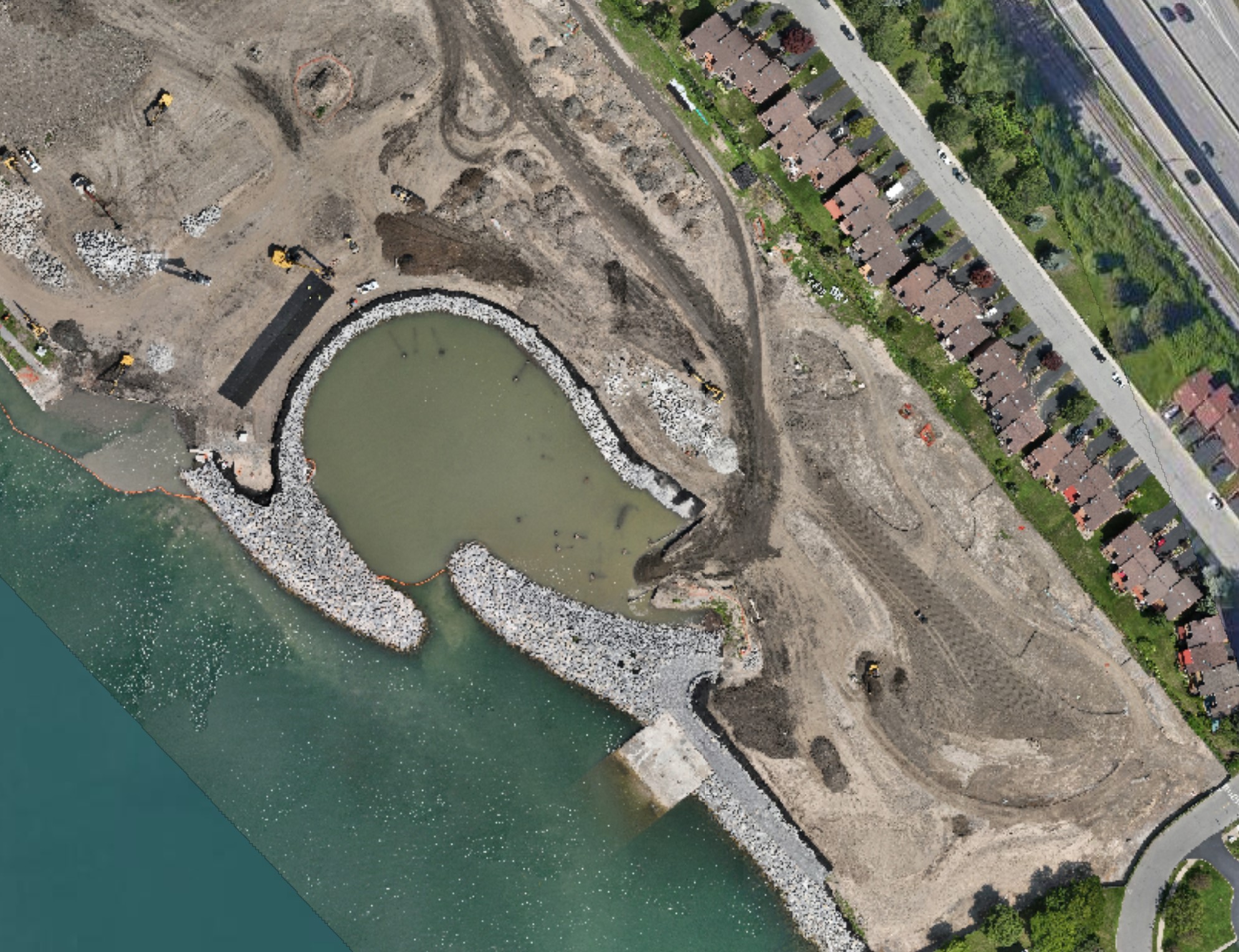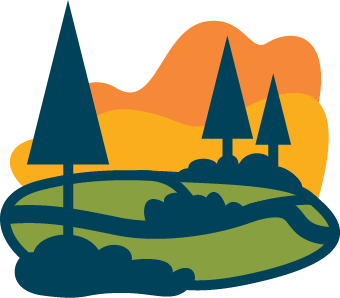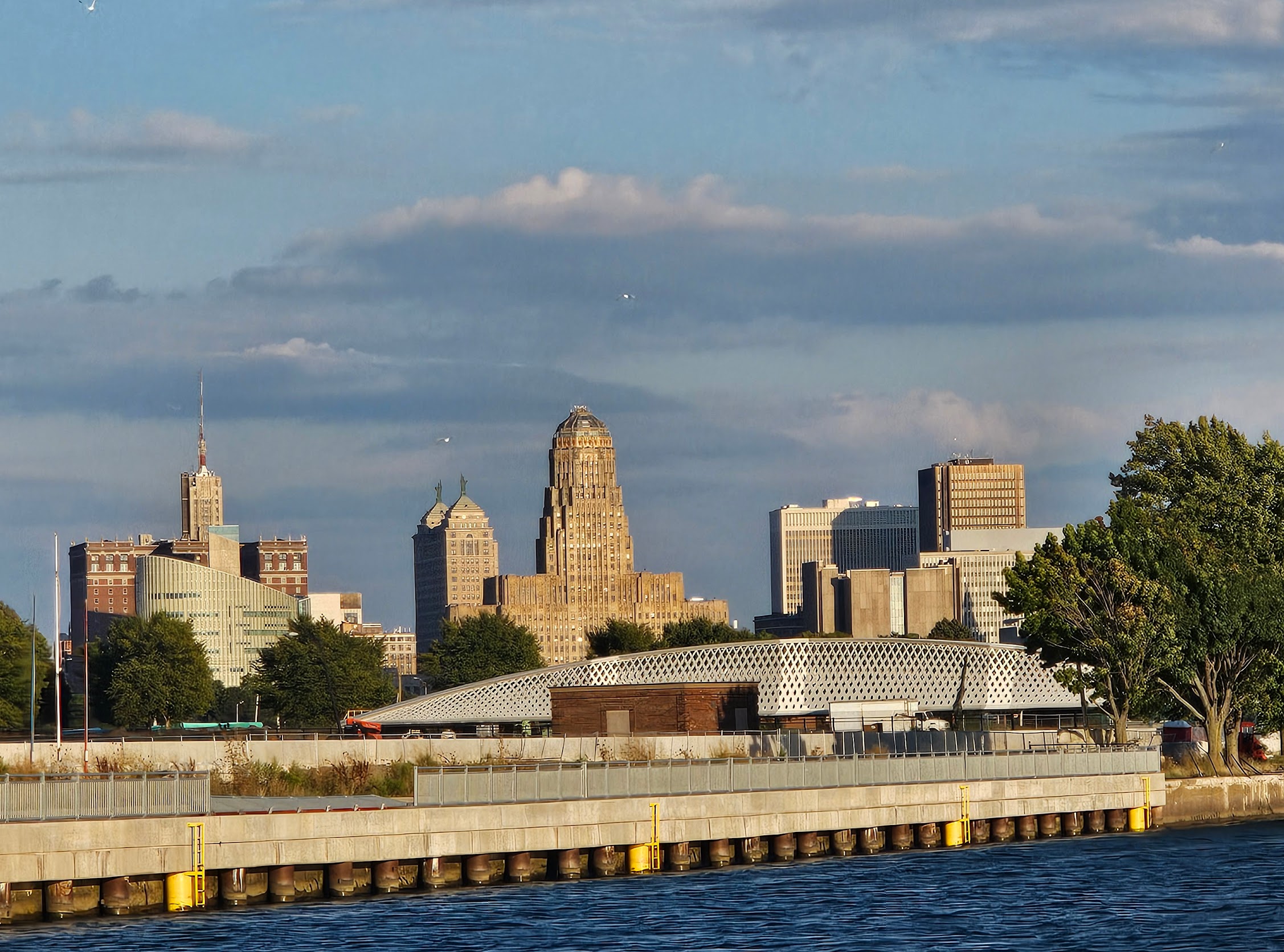
Since the Ralph Wilson Park bridge has arrived in mid-July, crews have been busy welding together the four large pieces. It is now one continuous 266’ long, 220-ton structure waiting to serve the community as an important access point to the park and grace the city’s skyline (as pictured above viewed from the Black Rock Canal). Painters are now on site applying the final coat of paint.
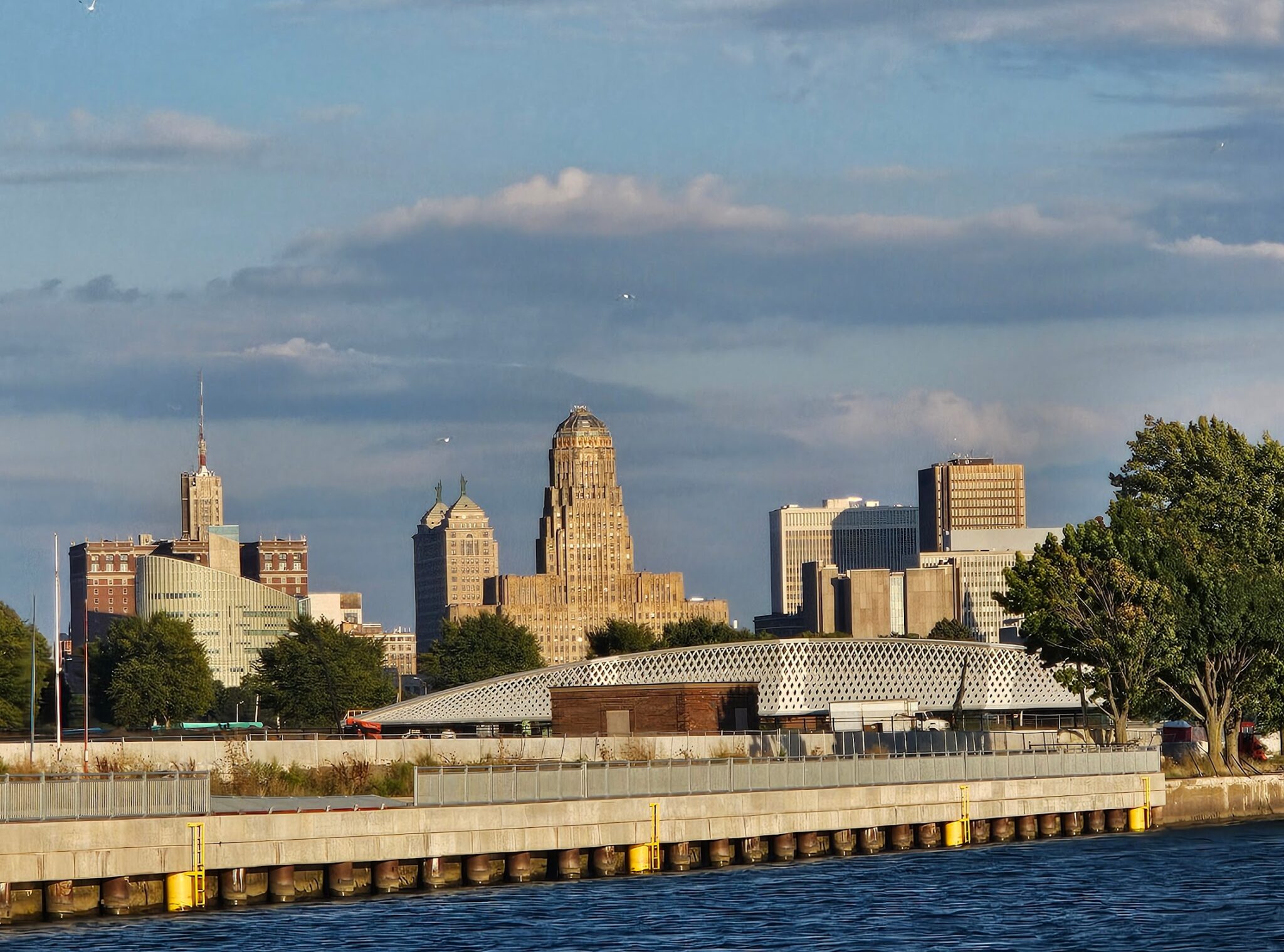
Months of careful planning will come to fruition in October as the bridge superstructure will be placed on a series self-propelled modular transporters (SPMT). SPMT’s are large axles designed to carry and move heavy loads. The last 1000 feet of the bridge’s 4000+ mile journey across the Atlantic, up the Hudson River, west across New York via the Erie Canal to the shores of Ralph Wilson Park and placed in its final location spanning the I-190 is depicted below. If you missed the wonderful video detailing the journey of the 4 bridge sections from Italy to Ralph Wilson Park, it can be viewed here, along with the video of the community reaction to the bridge.
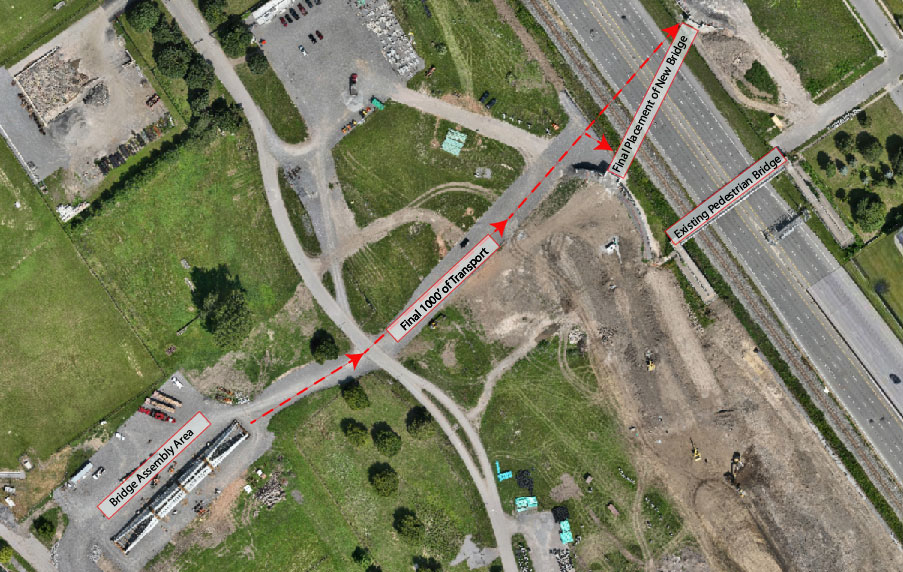
The placement of the bridge superstructure on the abutments will be an exciting milestone in the community’s vision to increase access to the waterfront. The bridge will not be open for use this year after installation – extensive work remains, including the concrete deck, lighting and railings, as well as the construction of the adjacent landscape (paths, pathways, utilities and turf) of the park, before it will be safe to walk across and open to the public.

Major Progress on the Inlet and South Lawn
On the south end of the park, the excavation of the inlet is complete! Rootwads, standing snags (pictured below) and live posts have all been placed. Crews are preparing to place protective fencing and subaqueous plants in the inlet. The submerged aquatic vegetation being planted in the inlet will provide a habitat for fish and small invertebrates to shelter, feed and reproduce. Our community will have a front-row view of the development of this habitat and learn more about its important function and environmental significance!
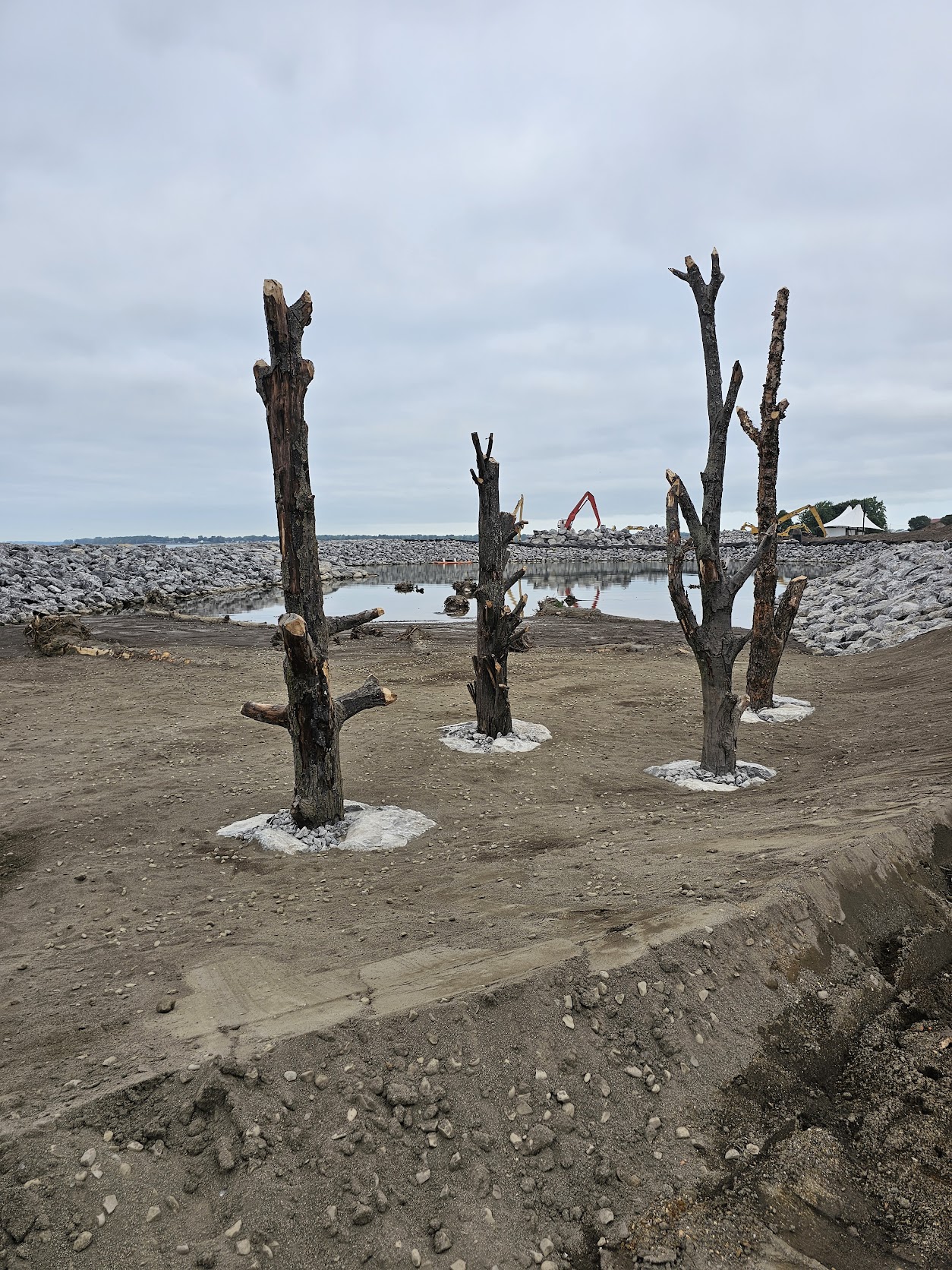
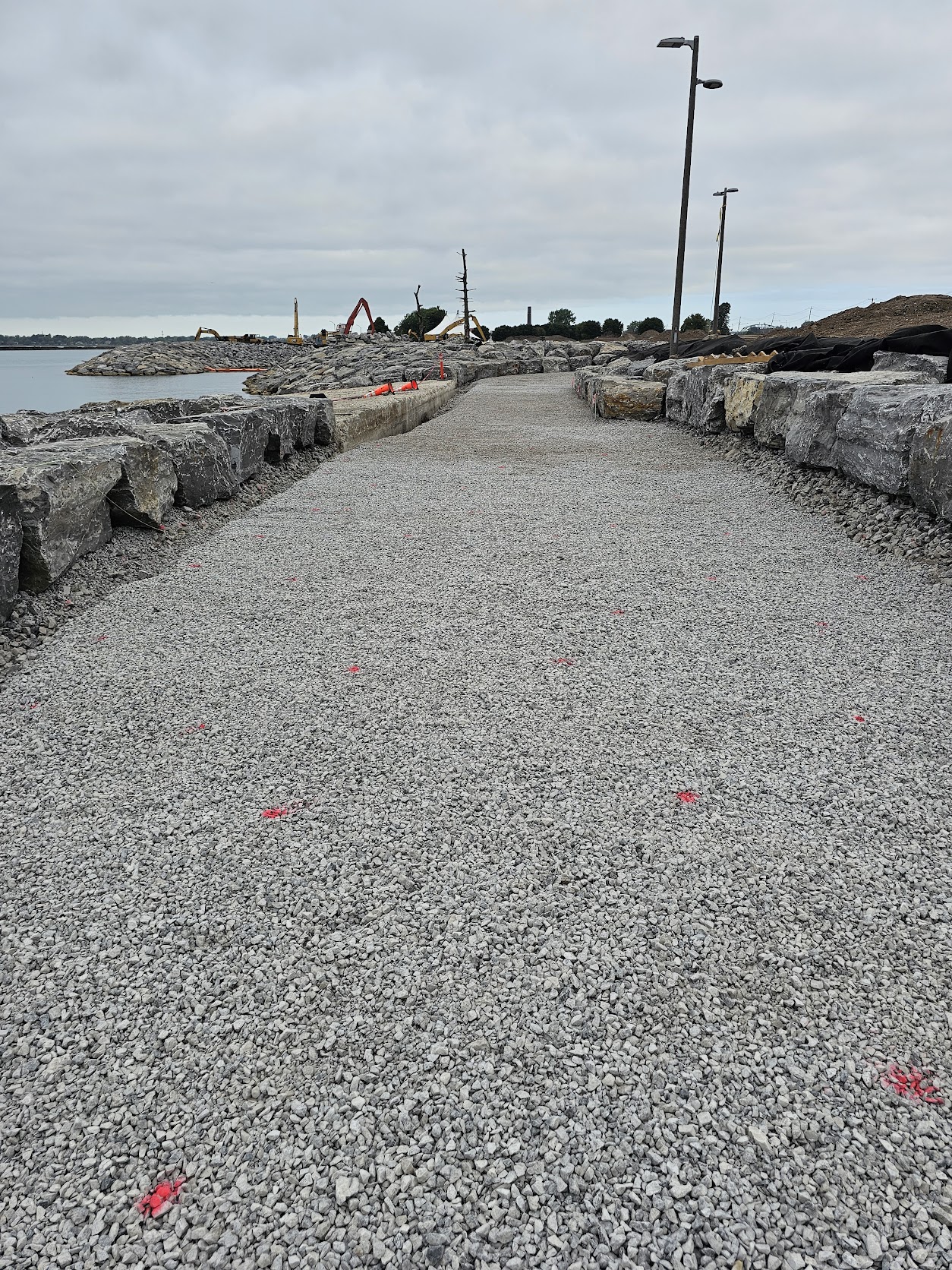
Subgrade elevations and storm network piping are complete on the South Lawn. Work will now transition to the construction of paths and pathways and the placement of planting soils. The pathway south of the seaplane ramp as well as new pedestrian scale light poles are pictured above.
Fall is for planting as soil temperatures remain warm and ample rain and cooler air temperatures promote root growth. An extensive array of native trees and shrubs are planned to go in the South Lawn this fall!
